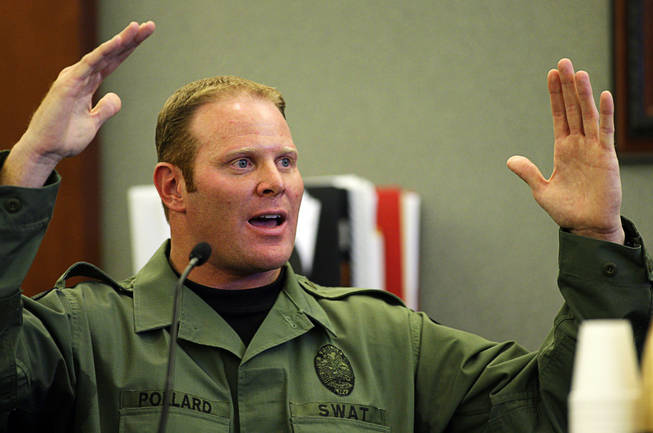
Henderson Police SWAT Officer Brian Pollard testifies to the events that led him to shoot Richard Nolton Sr. during an inquest into the shooting at the Regional Justice Center Friday, Sept. 10, 2010. Nolton was shot in Henderson in July.
Published Friday, Sept. 10, 2010 | 1:50 a.m.
Updated Friday, Sept. 10, 2010 | 7:25 p.m.
Sun Archives
A Henderson Police SWAT officer testified on Friday that he had no choice but to fatally shoot a man during a July standoff at the man’s Henderson home.
Officer Brian Pollard shot and killed 42-year-old Richard Bernard Nolton in the early morning hours of July 3 after a tense standoff during which Nolton repeatedly told officers he wanted to die.
The standoff began at about 7 a.m. at the home on Severn Street that Nolton shared with his wife, two of his children and his mother-in-law.
Nolton’s wife called 911 and said her husband had threatened her with a pair of scissors. When police responded to the home, Nolton told them he was not going to go to jail and said he hadn’t threatened his wife. He also said he wanted the police to kill him, according to testimony at a Friday inquest into Nolton’s death.
A toxicology report revealed that Nolton had been using methamphetamine before he was killed and had a lethal level of the drug in his body when he was shot.
After about four hours of testimony and 45 minutes of deliberations, jurors ruled that Nolton’s death was justified.
Jury forewoman Diane Lehman said Pollard’s testimony on the stand was what convinced the jury.
“I think the part that it came down to was the officer who shot him stated that he felt that gentleman with the gun was going to turn and harm his guys, his police officers,” she said after the proceedings concluded Friday afternoon. “At that point, you have to feel that it’s justified. The way the information was presented was all very clear. The district attorneys had their ducks in a row.”
Of the seven jurors — five women and two men — only six signed off on the verdict form.
Lehman, a 48-year-old Las Vegas resident who works in accounting, said that while the all the jurors were generally in agreement over the shooting being justified, one woman didn’t feel right signing off because she believed Nolton was mentally ill and said police should have different ways of dealing with people who have mental illnesses.
A coroner’s jury doesn’t have to be unanimous in its verdict; four out of seven must agree. The jury had to decide whether the officer’s actions were justifiable, excusable or criminal.
“We all did believe the gentleman had a mental illness,” Lehman said.
Several officers testified that over the course of about an hour, Nolton was asked numerous times to come outside and surrender.
Shortly after 8 a.m., Nolton left the home and confronted officers with a handgun; police said officers repeatedly told Nolton to drop the gun and surrender, which Nolton did not do.
At that point, Pollard fired one shot. Nolton died at the scene.
“I feared that if he got that gun up on target, that he was going to shoot at my partners and I. And I knew that I couldn’t let that happen,” Pollard testified. “I knew I had to do something to stop that action. It was at that point that I fired one round and hit him on the back right side of his head.”
Pollard said that Nolton repeatedly made suicidal statements and was baiting the officers to shoot him.
Police later determined the gun, which appeared to be a semi-automatic handgun, was actually a B.B. gun.
Dr. Lisa Gavin, a medical examiner with the Clark County Coroner’s Office, testified during the inquest that although the amount of meth in Nolton’s system was enough to kill a person, he died from the gunshot wound to his neck. The bullet severed his spinal cord, and he died within seconds, she said.
The toxicology report indicated that Nolton was a long-time meth user who had built up a tolerance to the drug, she said.
Patrol Officer Steven Brown was one of the first officers to respond to the 911 call. He said that Nolton’s wife, a 13-year-old son and Nolton’s mother-in-law were able to exit the home as officers arrived. Another son, 15-year-old Richard Nolton Jr., remained in the home with his father.
Brown said Richard Nolton Jr. had a broken leg and was unable to get out of the home on his own.
Another officer, Doug Lynaugh, was able to reach Nolton by phone, and Nolton agreed to bring his son outside in a wheelchair, Brown said. But Nolton came out the front door with his son behind him, on crutches.
Nolton was wearing a black parka and told the officers that they “might as well just shoot me because your Tasers won’t get through my jacket,” Brown testified.
As he came out the front door, Nolton also said his wife was lying and told police to “check the cameras” because he was innocent. Officers later learned that the home across the street had surveillance cameras out front.
According to testimony on Friday, a subsequent review of the neighbor’s tapes showed that the cameras weren’t focused directly on the Nolton home and didn’t capture the events that unfolded that morning other than a short snippet that showed two officers as they ran across the street.
Investigators also found that Nolton was wearing a long-sleeved shirt, a tank top, underwear, shorts and two pairs of denim jeans under the parka.
It was hotter than 100 degrees that day.
Nolton’s wife, Velma Nolton, was asked to testify at Friday’s inquest but didn’t appear. A recorded statement she gave to police shortly after the shooting was played for jurors.
In the statement, Velma Nolton tells police she had learned in April that her husband, to whom she had been married 15 years, had been using meth when he was hospitalized following a suicide attempt.
She said he had a history of depression and anxiety and had attempted suicide several times in the past.
Coming down off meth made his anxiety worse, she said.
“He would be crazy. He would be gone for days at a time and come home angry and threatening, and that’s not who he was,” she told police.
Velma Nolton told the officer she woke up in the middle of the night July 3 and didn’t know where her husband was. She made a pot of coffee and waited. Finally at about 5:30 a.m., she heard the dog growl and went to the garage, where she began questioning her husband about where he had been.
She said he told her not to ask any questions.
“I put my arms around him and told him I loved him and told him, ‘you have to stop, you have to make a better choice than this,’” she tells the detective.
Her husband then grabbed a pair of scissors and told her he was going to kill her. She called 911.
In the meantime, her husband popped open a bottle of Xanax and took the remaining pills, she said. He also began threatening her with a knife.
He told her there was no way he was going to jail.
She said he kept repeating, “They’re not going to take me out of here alive.”
She said although he had a history of depression and anxiety, her husband had been a “normal” person until about a year and half ago when he lost his job. He lost his insurance and could no longer get medication.
“As long as he was on his medication, he was fine. Our insurance ran out shortly after we moved here and he couldn’t get his medication, and that led to a very deep depression,” she told the detective.
The Noltons were living with Velma’s mother and grandfather, who had lived at the home on Severn Street for about 30 years.
Velma Nolton’s grandfather died in January. Her mother was sick and awaiting a heart transplant, she said. “It’s a lot of stress,” she said.
She said she knew her husband and her son had been watching videos on the Internet about police officer-involved shootings. She said she knew that if he was going to kill himself, that was how we wanted to go.
“He wasn’t thinking clearly,” she said.
She told the detective that her husband had threatened her before and on different occasions had swung a baseball bat at her, thrown a cinder block at her and threatened her with knives. She said he would head-butt people and had busted her lip by doing so the previous week.
Lynaugh, one of the officers who responded to the scene, said he spoke with Nolton on the phone during the standoff. Nolton told him over the phone that he wanted police to kill him and that he was not going to go to jail.
While speaking with Nolton on the phone, Lynaugh took notes, which he reviewed from the witness stand. Among other notations, he said, he wrote that Nolton said, “I will have something in my hand to make sure you kill me.”
Henderson Police Sgt. Robert Hart said throughout the standoff, the officers were very concerned about Nolton’s teenage son, who didn’t want to leave his father’s side.
“A person who is suicidal may also become homicidal and may want to end their life along with another person’s life,” Hart said. “So the concern was to get the son out of the situation.”
Nolton came out once with a knife in his pocket; he then went back into the house and came out again with the gun. Hart said he tried various tactics to get Nolton to drop the weapons and to get the boy away from the scene, but neither Nolton nor his son complied.
At one point, Hart said, father and son struggled over possession of the handgun, which Nolton held in his hand. Though he didn’t specifically aim it at anyone involved in the situation, he waved it around haphazardly, Hart said.
While Nolton, holding the gun, was saying “just shoot me, just shoot me, let’s end this right now,” his son was imploring him, “Dad, don’t do this,” Hart said.
Hart said he was armed with a non-lethal beanbag-shooting gun, but such a weapon was “very unlikely to have any effect on anyone in that kind of clothing and in that kind of state.”
Firing at Nolton with a nonlethal bullet, Hart said, would likely have agitated him and caused him to bring up the weapon.
As for the shot Pollard fired, “I think it was the correct shot to be taken,” Hart said. “Unfortunately, the only type of shot that will instantly stop a person from doing what they are doing is a shot to the head.”
Patrol officer Bret Hyde, who was present throughout the standoff, said he saw Nolton, holding the gun in one hand, hug his son with his other arm and whisper something in his ear.
“To me, it looked like he wanted to end this,” Hyde said. “It seemed like he was saying goodbye to his son.”
Nolton let go of his son and turned, which is when Pollard fired the shot.
Pollard, who has been a SWAT officer for 12 years and with the police force for more than 16, testified that SWAT team snipers said over the radio they were unable to get a clear shot of Nolton that wouldn’t endanger his son.
“I decided that if we had a shot, we were going to do something about it,” he said. He said he raised his rifle and placed the sights on the back of Nolton’s head; as Nolton turned away from his son, he fired.
“Since this happened, I’ve been able to go over this hundreds of times. I’ve what-if’d, could’ve’d and should’ve’d it over and over and over again. And faced with those circumstances at that point in time, there was nothing else I could do,” he said. “I knew that I had to stop his actions right then, and the only way I could do that was to fire a gun.”
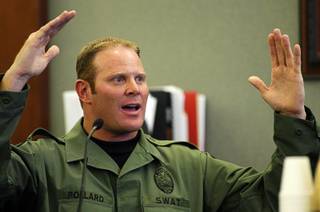
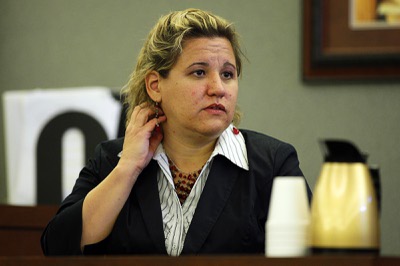
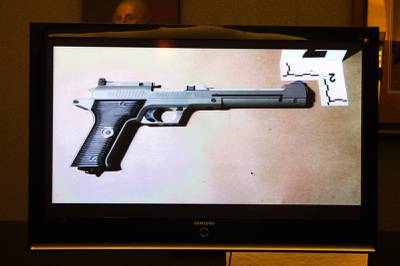
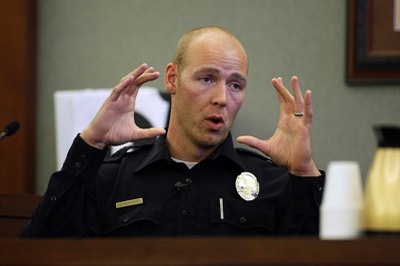

Join the Discussion:
Check this out for a full explanation of our conversion to the LiveFyre commenting system and instructions on how to sign up for an account.
Full comments policy